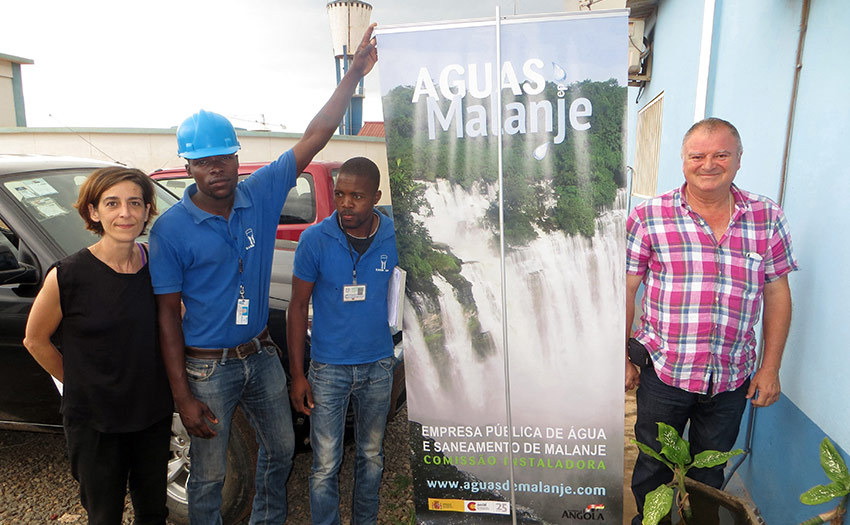Old Caxtonians at the Service of Science

A group of researchers, scientists and medical doctors, all former students at this prestigious British school, reflect on the challenges that the scientific world is facing during the global health crisis.
During the past year, the entire world has placed its trust in the scientific community to find the answers and solutions to one of the most challenging situations that society has ever experienced. ‘We are currently seeing an unprecedented volume of scientific publication (with approximately 137 scientific articles published each day related to COVID-19) and this is principally due to the financial investment that has taken place in the past year’, said Amadeo Sena, postdoctoral researcher at the Instituto Interuniversitario de Investigación de Reconocimiento Molecular y Desarrollo Tecnológico. This increase in funding for science ‘should not be an exception, but should be the norm so that we can be prepared for future challenges’.
Social Measures
Regarding the measures undertaken to control the pandemic, Lucía Rubio, associate specialist in Haematology at Madrid’s Hospital Universitario Ramón y Cajal, who recently spent time at the Bone Marrow Transplant and Cellular Immunotherapy for Malignant Hematology Unit at the Moffitt Cancer Center in Florida to learn more about the innovative CAR-T treatment, said that ‘these measures should be based on recommendations by groups of experts and technocrats, and should be dynamic in order to adapt to an extraordinary situation that changes constantly’.
Julio Muñoz, in charge of the Service for Preventive Medicine and Public Health at the hospital in Sagunto, said that ‘at the individual level, the use of masks and observing physical distance is fundamental. The risk of contagion is drastically reduced when everyone wears a mask. At a societal level, limiting meetings to small groups is essential, both in homes and in places where masks are not worn, such as in restaurants. Unfortunately, in our country, the economic impact associated with these measures is significant, but I am confident that they are effective, particularly as regards limiting indoor capacities. Restricting mobility also has a positive effect since it limits exposure to the disease as well as the spread of cases from harder-hit areas, and at the international level, these measures also limit the spread of new strains of the disease such as the South African, Brazilian or British variants’.
Risks of the Vaccine
One topic that has been generating controversy in past months is whether the vaccines are safe due to their possible side effects. Amadeo Sena is clear on this subject: ‘It’s important for people not to be alarmed and to get their information from official sources, as well as to contrast all of the information that they receive about vaccine safety. I would advise everyone to read the information that the EMA provides on this topic’. Likewise, Lucía Rubio said, ‘Currently, the possible risks of the available vaccines don’t appear to outweigh the benefits for the general population. I believe that the criteria the authorities are following to prioritise vaccinations are coherent and in line with social health policies’.
From the University of Oxford, Teresa Vilanova, a researcher in Biotechnology Applied to Reproductive Medicine, said, ‘The studies that have been carried out in order to develop these vaccines were extremely thorough and included an even greater number of patients and volunteers than other medicines that have also been approved for use by the European Medicines Agency’. In his daily practice of medicine, Julio Muñoz said, ‘We are probably at a turning point in producing nucleotide vaccines. With the mRNA vaccines (Pfizer and Moderna), the general public might have the impression that things have been done too quickly, but this isn’t the case at all. It’s true that there aren’t any nucleotide vaccines previously approved for use in humans, but there are DNA vaccines that are used regularly in veterinary medicine. There are many advantages of mRNA vaccines over DNA vaccines, principally for safety reasons. These vaccines are extremely interesting options for treatment and prevention, and fortunately the arrival of SARS-CoV-2 came at a time when this technology was sufficiently advanced to be able to utilise it. There is a lot of controversy about these vaccines, and precaution has been the prevailing principle. The case of the AstraZeneca vaccine is worth mentioning: eventually thrombosis has been recognised as an adverse side effect of the vaccine, but the chance of suffering this side effect is substantially lower than that of other common medicines and addictive substances. The risk/benefit relationship is extremely clear and is very much in favour of inoculation with this vaccine (or any other one that is available). Any unwillingness toward having this vaccine, or fear of it, that has increased in past weeks is itself an adverse side effect of the constant stream of information that we are exposed to and that often already contains the pertinent clarifications’.
Future Pandemics
Many virologists warn about the possibility of new pandemics in the future. Amadeo Sena did not deny the truth of this and said, ‘The ability to improve response times is in our hands, and we can accomplish this by increasing funding for science and innovation. On a national level, it would be a real advantage not to have to depend on foreign technology. Imagine what the situation in Spain could have been like if a year ago we had had Spanish businesses able to produce and distribute quick diagnostic tests, PCR test kits, ventilators or FFP2 masks on a massive scale’. In the words of Lucía Rubio, ‘The way to try to prevent the devastating repercussions we have seen is to create rapid response systems, strengthen international coordination efforts and give scientific research the importance and support that it deserves’. It’s true that there have always been pandemics throughout human history, since as Teresa Vilanova said, ‘They are nature’s mechanism for natural selection in order to regulate animal infestations. As science and technology advance, humans develop more and more effective ways to prevent these viral variants, but these techniques for prevention also serve as a filter and allow illnesses that are more lethal and contagious to prevail’. Like his colleagues, Julio Muñoz is not sceptical about the possibility of new pandemics. ‘In recent years we have seen the first cases of diseases considered emerging diseases here in Spain due to climate change, which has brought mosquitoes from Africa to the peninsula. It’s not absurd to think that malaria could return to the Albufera region, or that chikungunya could become a real problem in the southern United States. Fortunately, for diseases spread by mosquitoes, there are very interesting lines of research into genetic modification that may put an end to this age-old problem. But it’s logical to think that the next pandemic, like this one, will be via airborne transmission, and I think that’s the area where we have the most to learn from this pandemic’.
Investment in Science
This group of researchers and medical doctors, in addition to sharing an education at the same school in Valencia, agree that support for basic science is the key to all medical advances. Amadeo Sena recognised that the quick development and commercialisation of the diagnostic tests and vaccines to mitigate this pandemic were ‘in large part due to the research work that the scientific community has carried out in past decades in these fields and that can now be applied whenever society requires it’. From the United Kingdom, Teresa Vilanova was a bit more critical, indicating what she considers to be a weak point in academic research in recent times, and said, ‘Many research groups have had to redirect their efforts into COVID research, causing projects for other diseases such as cancer to be stopped. If we all join forces in a common direction, with both private and public funding, we could develop effective therapies for diseases much sooner’. In spite of everything, Lucía Rubio said that on this occasion, ‘an unprecedented and admirable research project has been conducted where science has placed itself at the service of humanity, and has done so in a race against the clock’. Agreeing with his colleagues, Julio Muñoz said, ‘With the right backing, the mobilisation of the scientific community can produce incredible results’.






Recent Comments